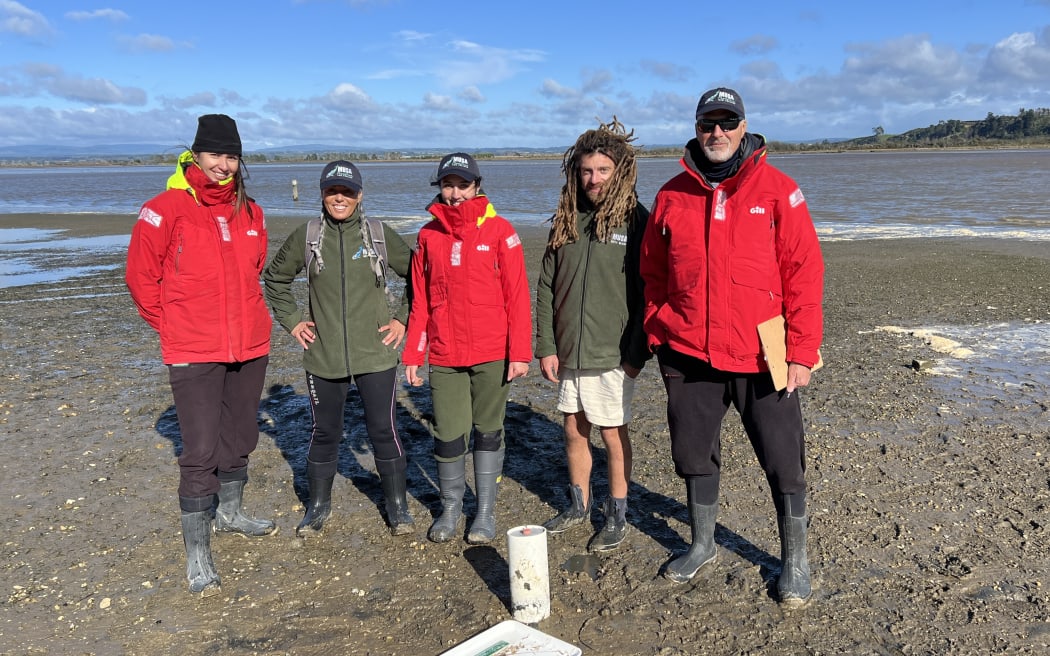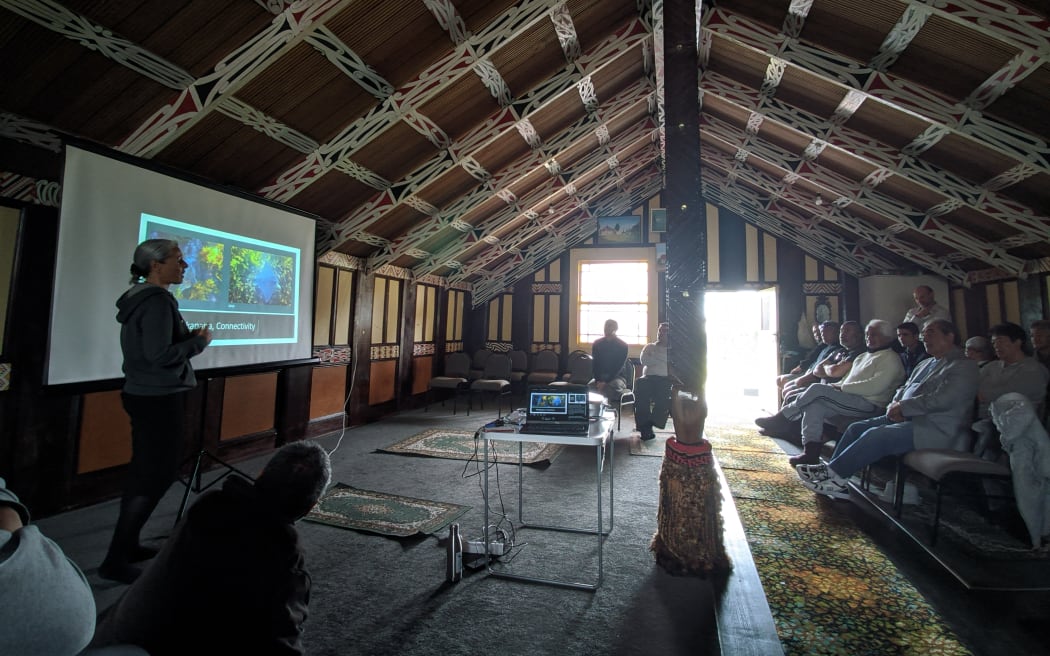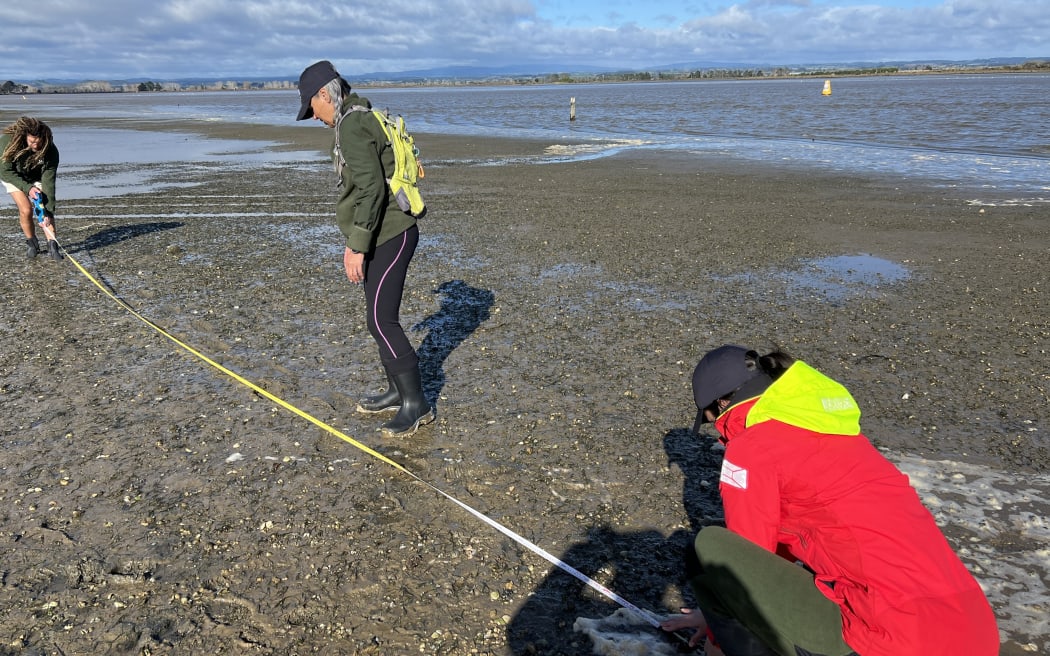There are many signs in the taiao (natural world) if you look close enough. Like when the tōrea (oystercatcher) strikes at low tide looking for food; these birds love shellfish, crabs and tuangi (cockles). But how long does it stay? And what is the relationship of the bird to what’s around it?

Dr Kura Paul-Buke (second from left) and her team at Waihi estuary, Pukehina. Photo: Justine Murray
Follow Our Changing World on Apple Podcasts, Spotify, iHeartRADIO, Google Podcasts, RadioPublic or wherever you listen to your podcasts
That’s just a glimpse into the tohu surveys (observations) that Professor Kura Paul-Burke and her research team are carrying out as part of the research project ‘Tāwharautia te wahapū o Waihi – Protect the Waihi estuary’ supported by Our Land Our Water and led by Te Rūnanga o Ngāti Whakahemo.

Dr Kura Paul-Burke presents the research project to local hapū in Pukehina/Maketu Photo: Dr Kura Paul-Burke
For generations this estuary was used as a mahinga kai (food gathering place) but over the years the water quality has declined, due to increased pathogens and sedimentation, much of which comes from four neighbouring water canals. Kura, the country’s first wāhine Māori Professor of Marine Science and Aquaculture, based at the University of Waikato, argues the straighter the canals are, the more likely pollutants or paruparu makes its way into the estuary.
As the water quality declines, the loss of species also means the loss of mātauranga Māori. Kura and her team draw on both western science and Māori knowledge systems in this study.
Integral to the harbour is the nana (seagrass) meadows. Nana is a kōhanga (nursery) and a foraging habitat for young snapper and trevally, but it is decreasing at an alarming rate.
In 1943 nana meadows were plentiful in the Pukehina district. Today there are just two discrete beds left – this impacts the feeding habits and survival rates of tuangi (cockles).
Kura and her team are on a mission to assess the health of the estuary and figure out what needs to be done. Producer Justine Murray joins the team at Pukehina to learn more.

Field work includes measuring up the area where a core sample is taken to check the size of tuangi. Photo: Justine Murray
To learn more
- Justine Murray spoke to another of Kura’s PhD students last year about the resilience of crayfish in Tauranga Harbour.
- Listen to ‘Collaborating to move freshwater species’ to learn about weaving mātauranga Māori and western science together for conservation translocations.
- Hear more about using these two knowledge systems together in ‘A bridge between science and mātauranga Māori’ and ‘The science of Matariki’.
- Listen to more podcasts produced by Justine Murray, including Nau Mai town and Te Ahi Kaa.


